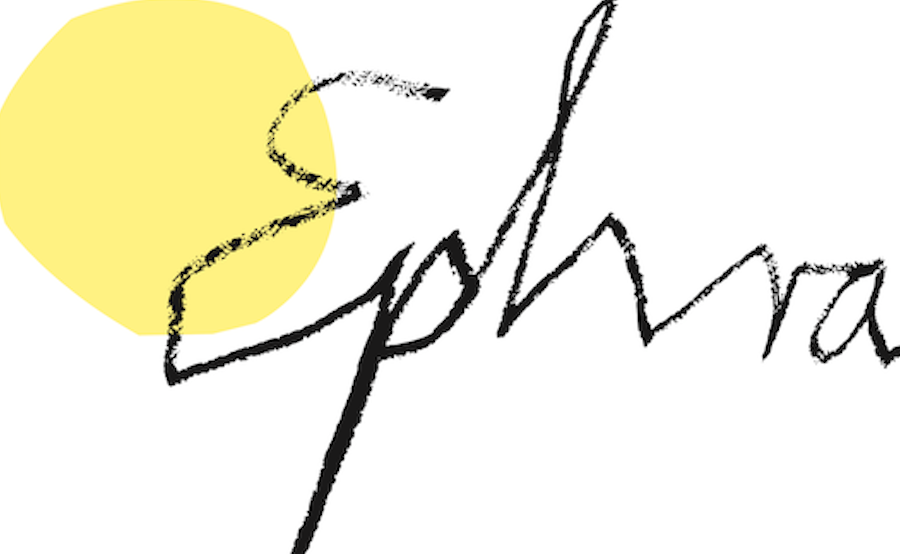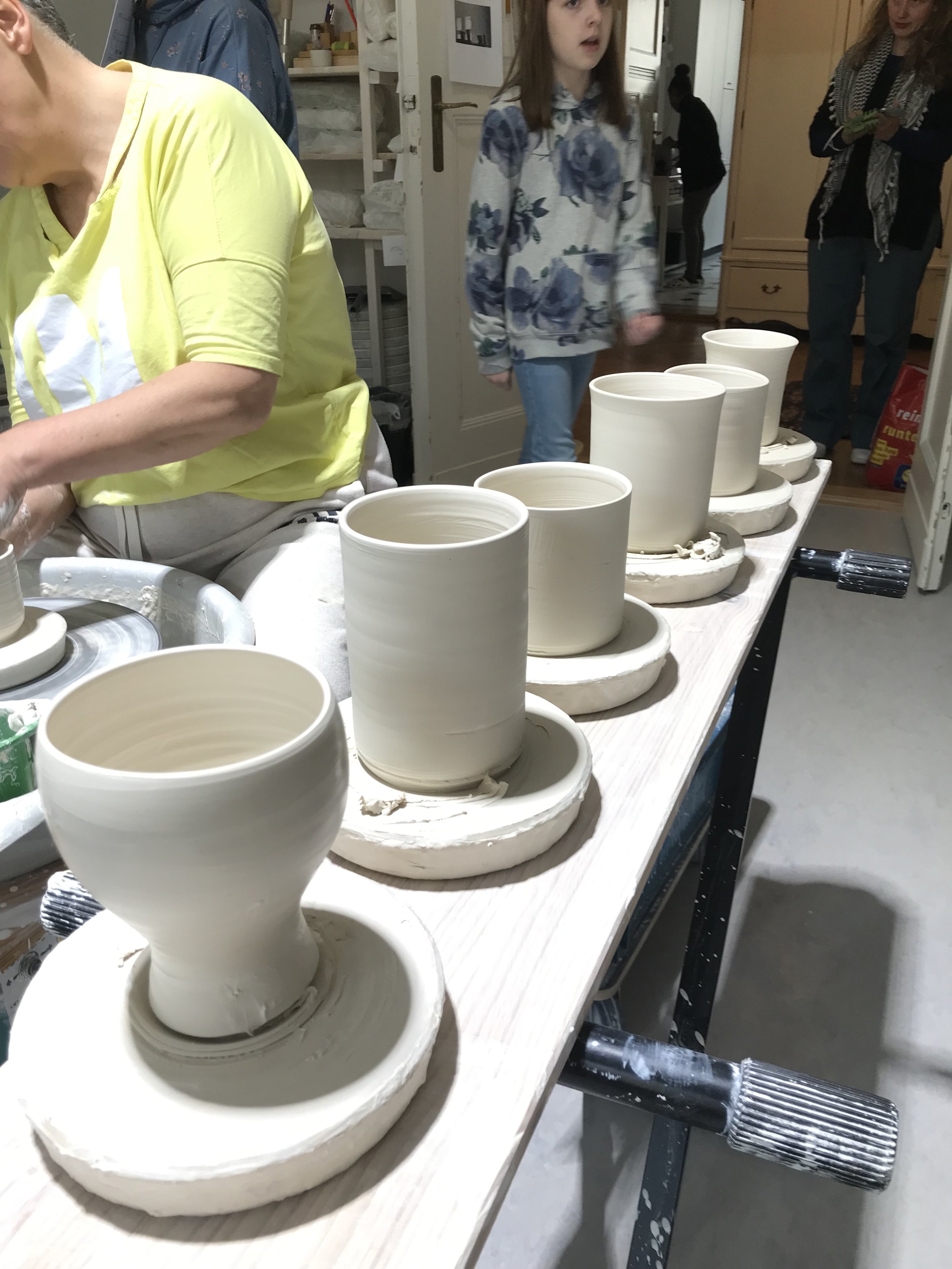Reaching one million with Uli Aigner
Uli Aigner welcomes us warmly to her bright, homely and spacious flat in Wilmersdorf, where her studio is located. (Children apparently live here too, because we discover a trampoline and knee pads from inline skating lying on the radiator). Uli’s workroom is mainly furnished in white and has quite high humidity, because that is important for her material – so that it doesn’t dry out. She presses a small lump of it into each of our hands for us to knead and model: Porcelain. From this, Uli makes vessels and other things on the turntable.
We are curious and want to learn more about the artist and her work. Uli leads us into the living room with a huge wall of books and a shelf filled with porcelain, where a large table is set up. We quickly take a seat at it. Not only are we tempted by the chocolate croissants waiting for us, but also by the various drinking vessels in front of us. So this is Uli’s work! Although the vessels are all made of the same material, they differ in shape: Some are curved, others cylindrical in shape, some are large, others rather small – they provide different drinking experiences and each object has a four-digit number carved into it. We drink tea while we interview Uli:
Why does Uli actually work with porcelain? Uli says that when she was 13, she watched a woman making pottery. Since then, she has been fascinated by this skill and knew that she wanted to be able to do it too. The special thing about a craft, according to Uli, is that you get better and better the longer and more often you do it. And you work with your hands, not just your head. Two years after meeting her, Uli did an apprenticeship in pottery, but later took a longer break and studied at the University of Art in Vienna, among other places. The artist tells us that these days she spends an average of two days a week at the wheel and consumes a tonne of porcelain per year. 1 tonne! That's 1,000 kilogrammes – an unimaginable amount. When the porcelain arrives, you can't use it at first because it's not supple enough. Then you have to work it with your hands and knead it. The hand sweat and small skin particles cause green mould streaks to form on the material, but that's a good thing. (So we helped Uli a bit earlier and preworked her porcelain!) The artist not only makes pottery, but also does large crayon drawings, paints and takes photographs. What else does she really want to do? Painting the façade of a house.
Next we want to know from Uli whether she learned much about art at school. She denies it; in the Austrian village where she grew up, there was hardly any access to art. Instead, she often went to the Austrian National Library in Vienna and read art books. So she never runs out of inspiration, even today. What else inspires her? Time! She feels the passage of time when she does something with and for others or when she communicates - as she is doing right now with us. That immediately brings another question to mind: Can Uli remember her first interview? She laughs and answers in the affirmative: That was in 1986 and the interviewer, Georg Schöllhammer from the Viennese newspaper Springerin, asked her about her exhibited work back then when she was an art student. She is at least as happy to be interviewed by us and promises to remember it for a long time!
We have already discovered that a number is always carved into Uli's porcelain vessels. This is because each piece is unique. With the project (which will continue beyond her lifetime) "One Million by Uli Aigner", her goal is to pot one million objects. To keep track, Uli numbers her works and creates digital twins. The objects can be viewed and bought online – or contact Uli and have your own vessel created, for example in a similar shape to the 6393 jug.
Uli likes the idea that people live with their art, use it every day and thus become part of the artwork themselves. Even in her own kitchen, all the dishes are created on her turntable. On an online world map on her website you can see where her work is distributed all over the world – that's really fascinating.
Now we become part of "One Million by Uli Aigner" ourselves: we think up vessels and draw them on paper while Uli turns them on the wheel. As she does so, she laughingly remarks that she has never made so many cups with ears! We are fascinated by how every tiny movement of her hands changes the shape on the wheel. We watch her spellbound and the atmosphere is very special – everyone comes to rest, almost like in a meditation.
Of course, Uli carves a number (7266-7274) into each object and writes down our place of residence. In a few weeks they will be fired and glazed, then Uli will give them to us. What a great visit to the studio! (And who knows: maybe Uli will soon receive a lot of orders for vessels with our prototypes as models?)
One Million by Uli Aigner – Edition Ephra:
Click here to see the whole edition.
© Uli Aigner, Tom McCallie
© Uli Aigner, Tom McCallie
© Uli Aigner, Tom McCallie

















